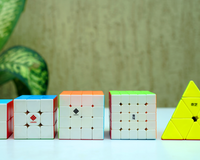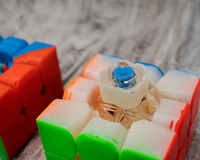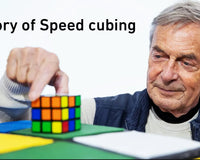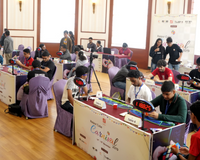Introduction
Speedcubing has evolved dramatically over the years, with new techniques and refinements constantly pushing the boundaries of what’s possible. If you’re looking to break past your current limits and achieve sub-10, sub-8, or even lower times, mastering advanced solving methods is crucial. In this blog, we’ll explore some of the most powerful techniques used by top cubers to unlock their full potential.
1. Advanced F2L: Efficiency and Lookahead

F2L (First Two Layers) is the foundation of fast solves. It is widely considered the most crucial step of advanced solving.
- Minimize Rotations: Reducing cube rotations can significantly improve fluidity. Practice inserting pairs from different angles and utilizing the back slot more in your solves.
- Advanced Pairing: Learn how to create and insert pairs without excessive cube rotations or unnecessary moves.
- Keyhole and Multi-Slotting: Using the keyhole technique helps insert pieces more efficiently. You can find a tutorial for Keyhole here.
- Predict First Pair: Predicting your first pair in inspection is one of the hallmarks of advanced solving.
2. Cross Optimization

The cross should be solved in 8 moves or fewer in most cases.
- Plan the entire cross during inspection
- Insert multiple cross pieces at once
- Get comfortable with solving an offset cross and fixing it at the end with D moves.
- Dual Color neutrality: If you are only solving with one colour, for example: white, it is highly advised that you learn to solve your cross on the opposite colour as well i.e. yellow. This will let you take advantage of easier crosses without hampering lookahead too much.
3. Advanced Last Layer Techniques

Speedcubers often rely on full OLL (57 cases) and full PLL (21 cases), but here are a few more algorithm sets that the pros use.
- COLL (Corners of Last Layer): this set helps you permute all the corners along with OLL whenever you encounter a cross OLL case. While not all algs are viable to use in regular solves, this is an extremely helpful set to know about as it will improve your CP recognition, which is important for future alg-sets like ZBLL.
- OLLCP (OLL+Corner Permutation): Allows you to permute corners along with solving the corners. It is helpful to know a few easy algorithms from this set.
- ZBLL (Zborowski-Bruchem Last Layer): Allows solving the entire last layer in one algorithm when all 4 edges are already oriented.
4. Edge Control for Faster LL
Last layer efficiency starts from your F2L. The following edge control techniques will help you get easier last layer cases:
- Edge Control during F2L: Using intuitive solutions to force better OLL cases.
- Winter Variation: helps you solve the last F2L pair while simultaneously orienting the last layer.
- ZBLS: Solves the last pair and orients all 4 edges at the same time, allowing for a quick ZBLL to finish the solution.
5. Advanced Finger Tricks and Execution

Once you have efficient solutions, executing them faster is the key:
- Eliminate unnecessary regrips: Use finger tricks that allow fluid movement without adjusting grip.
- Learn the best finger tricks for each algorithm
- Drill your algorithms thoroughly: Practice algorithms over and over until you don’t make any mistakes.
6. Learning from Top Solvers
- Watch solves from top cubers and analyze their techniques.
- Use slow-motion analysis to break down their F2L and LL finger tricks.
- Compare your solutions with theirs and adopt any efficient tricks you many find.
- Find and analyze reconstructions of top solvers on reco.nz.
7. Use Resources
There are many free resources available online when it comes to learning the above mentioned techniques and algorithms. YouTube channels like J Perm and Cubehead have uploaded countless tutorials, and a simple search will take you to the videos you need. Also, the speedcubedb.com website contains a plethora of sorted algorithms.

However, if all this confuses you and you would like a more structured route to your improvement, you can opt for xSkills. The courses contain material concerning everything you need in one spot from start to finish, across various events.
Conclusion
Speedcubing at a high level requires constant refinement and learning. By focusing on small things one step at a time you can break plateaus and achieve your next milestone. Start incorporating these methods into your practice routine and watch your solves improve!
































